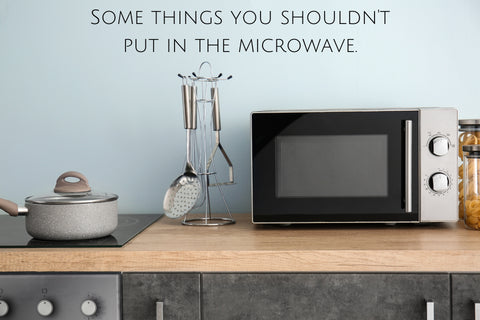The microwave is a futuristic appliance that can heat food. Currently, you can use the microwave to prepare cold foods without pre-heating them. However, heating food in a microwave could become a thing of the past for many people as soon as robots, instead of human beings and humans alike put their hand into eating food.
Food can retain flavour even when it is cooked for 1 hour at 175°C. It may lose a little flavour but not significantly so. However, it will change its texture and may turn off foods like chocolate or custard that are very sweet. I like to give my food a quick boil and put it in a container of cold water. This makes sure it doesn’t chill so much that it loses the flavour. I then take out 1/3 to half of the cooked food, put in fresh boiling water and boil it again for only 15 minutes or so until the texture is right. Then I repeat this until all my food is cooked (or if I have time, cool completely).
The hot box contains foods that have been sitting exposed to high temperatures, within just a few minutes of being heated. To avoid tragedies like those caused by the heat problem at MYD's michaelmichael, safe food heating and storing procedures should be followed.
Chilli Peppers
There are some food items whose ingredients can be easily obtained in a microwave. However, there are also some that should not be put into the microwave. One such thing is chili peppers. This could potentially cause a serious health risk if someone takes it into the microwave too long.
When you must cook something like chili always, you should not put it in the microwave. The reason is that microwaves are not good at killing bacteria. A microwave is bad for our health because it heats food to a high temperature and can cause cancer in our bodies.
How to heat:
Roast peppers, sauté them in the oven and then grill them safely for your next big summer meal.
Hard-Boiled Eggs
A hot microwave egg strikes your forehead, causing an explosion and everything in the room leaping 15 meters into the air.
Eggs cooked in the microwave release steam. The steam does not escape the whites and pressure is released. Once you have cooked the egg, you do not have to wait for it to harden
How to heat: The best way to keep an egg fresh after it’s been cooked is by letting it set in the refrigerator for 10 to 15 minutes. The egg will not only taste fresher and be a lot more nutritious–it'll also be easier for you to slice and dice, too.
Styrofoam
Despite its short shelf life and unique properties, Styrofoam can be very frustrating for humans. We often don't know how to use it safely, but most of the time we get it wrong.
Styrofoam cups are a common use case for microwaves. The issue is not the plastic, but it is how microwave oven cooks food. Styrofoam melts and turns into a lot of toxic materials when it is heated. Styrofoam is one of the most popular items that you can use in your everyday life. However, it's not good for your health because its uses are limited to microwave ovens and other food processing machinery. Styrofoam is typically used for cooking and microwave ovens can potentially harm your health. But this plastic waste could soon be a thing of the past thanks to cool technology. Controlled release foams are a manufacturing tool used to make food-safe, heat-stable plastics that do not melt or warp when heated.
How to heat: Place food on a glass or metal dish/tray instead of cooking in styrofoam. Cover with a paper towel, then microwave as usual.
Mug of Water
There are some things we shouldn't put in the microwave that can damage our health. These include (but aren't limited to):
1) Hot water: It can result in scalding injuries to the skin and internal organs
2) Cold water: Cold water can lead to pneumonia or other infections
3) Nutrients: Nutrients present in hot water such as magnesium, potassium and iron make hot water good for health
4) Green tea: green tea can be bad for you
5) Tomato juice: Tomato juice contains calcium oxalate
6) Coffee: Coffee increases cholesterol levels
7) Tea cools blood
How to heat: If you can heat water by using your brain, using an electric kettle is a very efficient and easy way. The rechargeable design is also very attractive, since it presents the best trade-off between convenience and efficiency.
Grapes
Yes, grapes should not be put in the microwave. Grapes have high levels of moisture, and when they are microwaved, the moisture inside the grapes can turn into steam and cause the grapes to explode. This can cause a fire or damage to the microwave.
Additionally, microwaving grapes can cause a dangerous situation where the grapes become extremely hot and can cause burns. It's best to avoid putting grapes in the microwave and to instead consume them fresh or cook them on the stove or in the oven.
Leftover Potatoes
If you reify your spuds in a microwave, don't refrigerate them, or heat them at 40C. When they're cooked and not immediately stored in the fridge, spores of the bacteria can multiply. Microwaving the potatoes won't kill the bacteria either, so your second-day potatoes could cause an upset stomach.
How to heat: Move cooked potatoes into the fridge as quickly as possible and remove from heat. Don't leave them for hours by the door on a warm, tepid day. Freezing potatoes isn't necessary for crispy skin. Follow this guide and the foil will be left off.




Comments (0)
There are no comments for this article. Be the first one to leave a message!